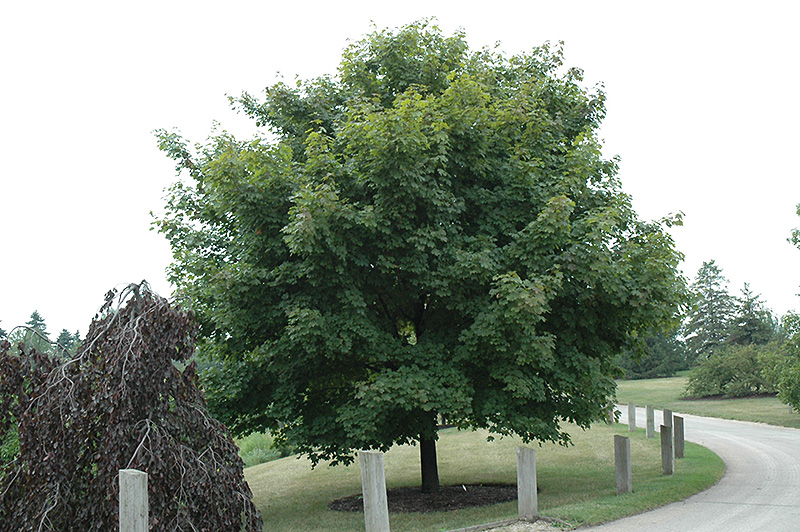Emerald Lustre Norway Maple
Acer platanoides 'Emerald Lustre'
Height: 40 feet
Spread: 45 feet
Sunlight:
![]()
Hardiness Zone: 4a
Description:
One of the finest, most aristocratic trees available, this is a good choice for a shapely street or shade tree; lustrous dense dark green foliage turns a rich yellow in fall, maintains a tight form with minimal pruning
Ornamental Features
Emerald Lustre Norway Maple is primarily valued in the landscape for its decidedly oval form. It is blanketed in stunning corymbs of lemon yellow flowers along the branches in early spring before the leaves. It has attractive dark green deciduous foliage which emerges brick red in spring. The lobed leaves are highly ornamental and turn yellow in fall.
Landscape Attributes
Emerald Lustre Norway Maple is a dense deciduous tree with a shapely oval form. Its relatively coarse texture can be used to stand it apart from other landscape plants with finer foliage.
This is a relatively low maintenance tree, and should only be pruned in summer after the leaves have fully developed, as it may 'bleed' sap if pruned in late winter or early spring. It has no significant negative characteristics.
Emerald Lustre Norway Maple is recommended for the following landscape applications;
- Shade
Planting & Growing
Emerald Lustre Norway Maple will grow to be about 40 feet tall at maturity, with a spread of 45 feet. It has a high canopy with a typical clearance of 6 feet from the ground, and should not be planted underneath power lines. As it matures, the lower branches of this tree can be strategically removed to create a high enough canopy to support unobstructed human traffic underneath. It grows at a medium rate, and under ideal conditions can be expected to live to a ripe old age of 100 years or more; think of this as a heritage tree for future generations!
This tree should only be grown in full sunlight. It prefers to grow in average to moist conditions, and shouldn't be allowed to dry out. It is not particular as to soil type or pH. It is highly tolerant of urban pollution and will even thrive in inner city environments. This is a selected variety of a species not originally from North America.

